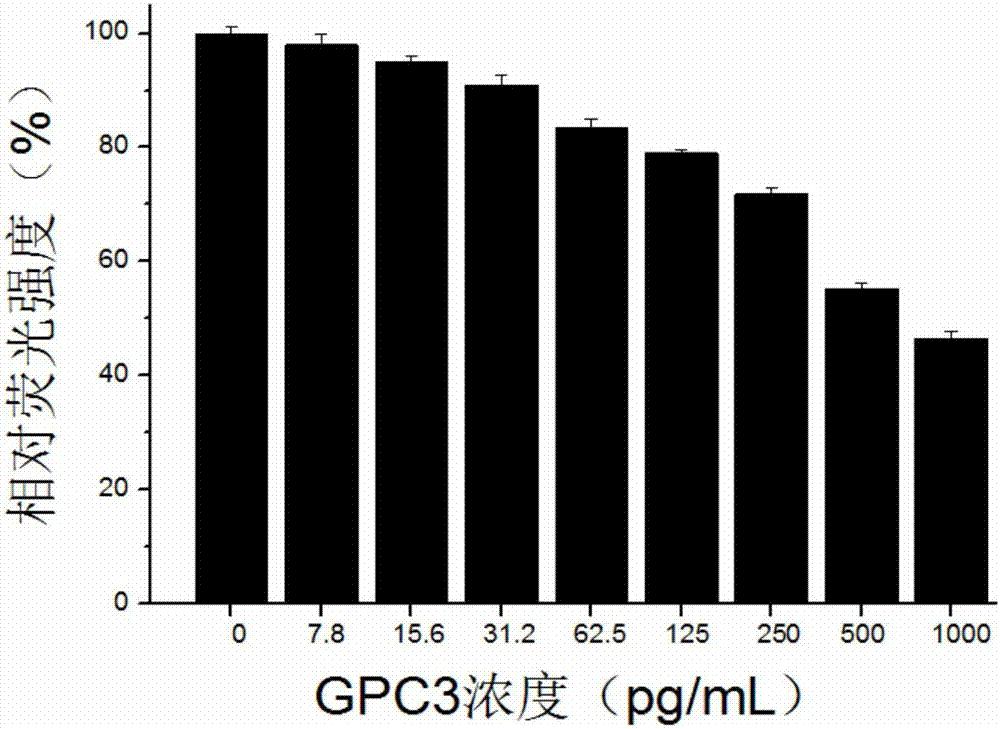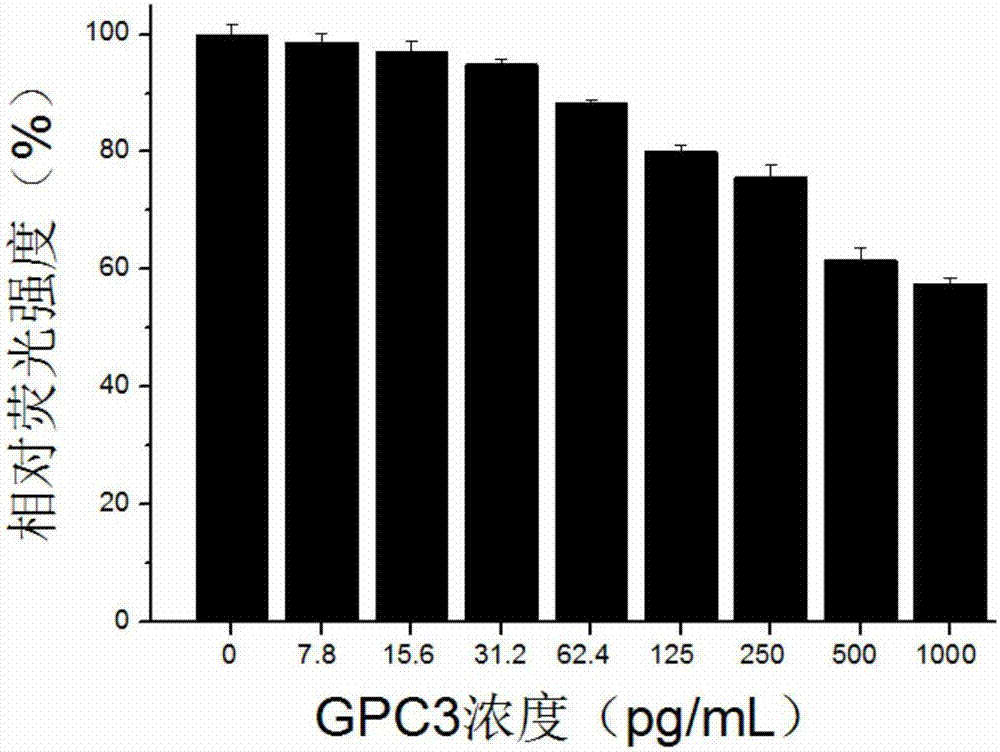A kit for high-sensitivity detection of proteoglycans and its preparation method
A proteoglycan, high-sensitivity technology, applied in the field of bioanalysis and medical detection, can solve the problems of difficult detection, complex proteoglycan composition, limitations, etc.
- Summary
- Abstract
- Description
- Claims
- Application Information
AI Technical Summary
Problems solved by technology
Method used
Image
Examples
Embodiment 1
[0073] A kit for high-sensitivity detection of proteoglycan GPC3, comprising:
[0074] Carboxygraphene coupled to monoclonal antibody 1, said monoclonal antibody 1 is an antibody prepared after immunization with the 70 amino acid sequence fragments at the carboxyl end of the core protein of proteoglycan; said coupled monoclonal antibody 1 The concentration of carboxygraphene is 10 μg / mL;
[0075] The carboxyl graphene of coupling monoclonal antibody 2, described monoclonal antibody 2 is the antibody that the amino terminal 510 amino acid sequence fragments of the core protein of proteoglycan are prepared after antigen immunization; Said coupling monoclonal antibody 2 The concentration of carboxygraphene is 10 μg / mL;
[0076] Highly positively charged green fluorescent protein (ScGFP); the concentration of highly positively charged green fluorescent protein is 0.005 μg / μL;
[0077] Buffer: a solution containing 10mM Tris-HCl and 100mM NaCl;
[0078] And, the microwell plate ...
Embodiment 2
[0100] Embodiment 2, optimization of reaction conditions
[0101] Effect of reagent addition sequence on GPC3 detection
[0102] Add 0.05-0.2 μg of carboxygraphene coupled with αGCN, 0.05-0.2 μg of carboxygraphene coupled with αGCC, 0.01-0.5 μg of ScGFP, and 0.001-0.005 ng of GPC3 into the 40 μL reaction system of a microwell plate in different order, and mix well 1. Place at room temperature in the dark for 15 minutes. After incubation, measure the fluorescence intensity (Ex: 470nm, Em: 509nm).
[0103] Among them: Group A is carboxygraphene coupled with αGCN, GPC3 and ScGFP mixed and then added with carboxygraphene coupled with αGCC; Group B is two kinds of carboxygraphene coupled with αGCN and αGCC respectively mixed with GPC3 and then added with ScGFP; C Group D is two kinds of carboxygraphene coupled with αGCN and αGCC, mixed with ScGFP and then added with GPC3; group D is mixed with carboxygraphene coupled with αGCC, GPC3 and ScGFP, and then added with carboxygraphene c...
Embodiment 3
[0122] Embodiment 3, the detection of GPC3 in buffer solution
[0123] Add 0.05-0.2 μg of carboxygraphene coupled with αGCN and 0-0.04 ng of GPC3 to 40 μL of 10 mM Tris-HCl and 100 mM NaCl solution in a microwell plate, mix well, and place at room temperature for 5 min; then add 0.01-0.5 μg of ScGFP, mix Mix well, and place in the dark at room temperature for 15 minutes; finally add 0.05-0.2 μg of carboxygraphene coupled with αGCC, mix well, and place in the dark at room temperature for 10 minutes. After the incubation, measure the fluorescence intensity (Ex: 470nm, Em: 509nm). The schematic diagram of proteoglycan GPC3 detection process is as follows: Figure 9 shown.
[0124] The results show that with the increase of GPC3 concentration, the fluorescence quenching intensity mediated by it also gradually increases, and the detection sensitivity can reach below 10pg / mL (such as figure 2 ), much higher than the sandwich ELISA method.
PUM
| Property | Measurement | Unit |
|---|---|---|
| concentration | aaaaa | aaaaa |
| concentration | aaaaa | aaaaa |
Abstract
Description
Claims
Application Information
 Login to View More
Login to View More - R&D
- Intellectual Property
- Life Sciences
- Materials
- Tech Scout
- Unparalleled Data Quality
- Higher Quality Content
- 60% Fewer Hallucinations
Browse by: Latest US Patents, China's latest patents, Technical Efficacy Thesaurus, Application Domain, Technology Topic, Popular Technical Reports.
© 2025 PatSnap. All rights reserved.Legal|Privacy policy|Modern Slavery Act Transparency Statement|Sitemap|About US| Contact US: help@patsnap.com



